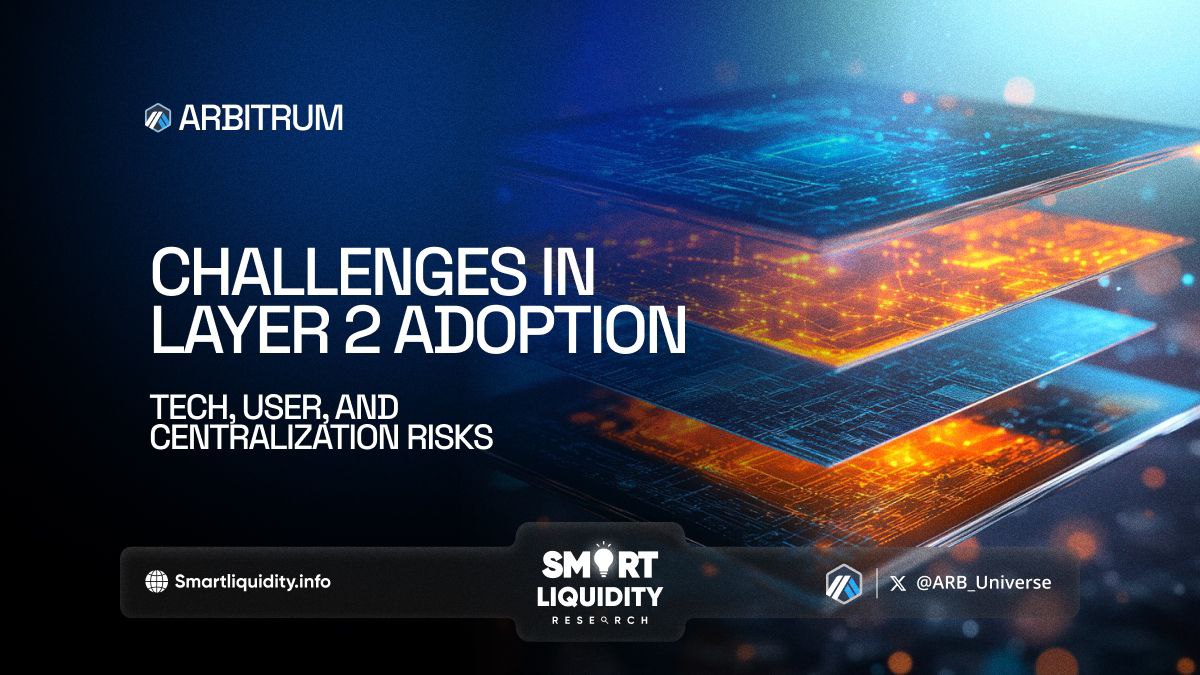Challenges in Layer 2 Adoption: Tech, User, and Centralization Risks


Challenges in Layer 2 Adoption: Tech, User, and Centralization Risks! Layer 2 (L2) solutions like Arbitrum are transforming the blockchain ecosystem by offering faster transactions and lower gas fees without compromising Ethereum’s security. However, while the technology promises scalability and efficiency, its widespread adoption still faces several critical challenges.
💡 TL;DR
Layer 2s like Arbitrum promise scalability and lower costs, but they face serious hurdles: technical integration issues, poor user experience, and centralization concerns. Solving these will be key to unlocking Ethereum’s full potential.
1. Technical Complexity
The backbone of Layer 2 lies in sophisticated architectures—Optimistic Rollups, zk-Rollups, and more. For developers, integrating these solutions can be daunting. Bridging assets between L1 and L2 involves additional infrastructure, smart contract audits, and constant upgrades. For many projects, the tech lift is simply too heavy.
Moreover, issues like fraud-proof windows, delayed withdrawals, and cross-chain messaging complications remain major hurdles. These technical nuances can introduce friction, especially for dApps looking for smooth interoperability across chains.
2. User Experience (UX) and Education Gaps
Even seasoned crypto users sometimes struggle to navigate between L1 and L2. The concept of bridging assets, managing multiple wallets, and understanding transaction confirmations on L2 chains is far from intuitive.
Most mainstream users expect seamless, one-click experiences—something still lacking in many L2 ecosystems. Until UX is simplified and user onboarding is frictionless, mass adoption will remain elusive.
3. Centralization Risks
Despite decentralization being the ethos of Web3, many Layer 2 solutions are still operated or upgraded by centralized teams or multisig-controlled contracts. Arbitrum, for instance, has made strides with community governance through Arbitrum DAO, but central points of failure remain.
Key concerns include:
- Upgradeability by dev teams
- Centralized sequencers
- Limited validator diversity
This creates trust issues for users and developers wary of censorship or potential exploits.
The Path Forward
For Layer 2 adoption to accelerate, the ecosystem must:
- Improve developer tooling and documentation
- Focus on UX innovation (auto-bridging, wallet abstraction, etc.)
- Continue progressing toward decentralized governance models
- Educate both users and builders through tutorials, community support, and incentives
Arbitrum, with its strong ecosystem and growing TVL, is positioned to lead this movement. But success will hinge on addressing these foundational challenges head-on.
REQUEST AN ARTICLE
📲 Stay informed: Smartliquidity.info
🐦 Follow the latest: @ARB_Universe




